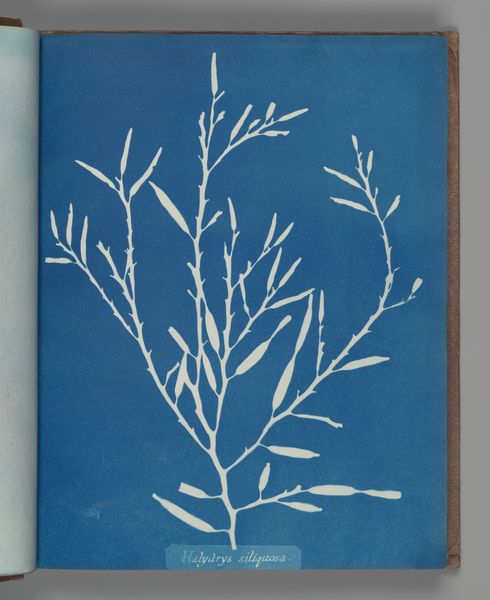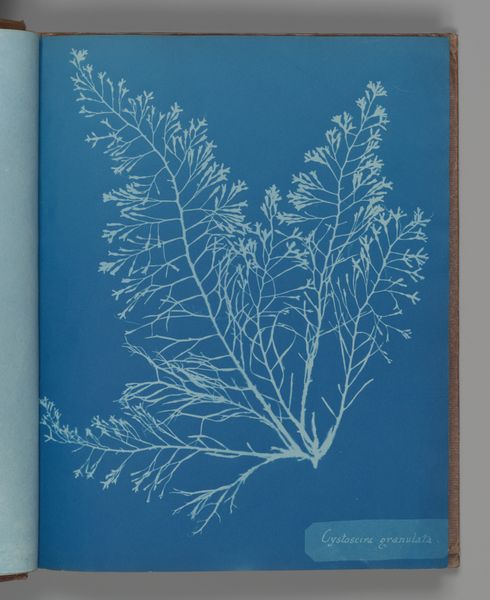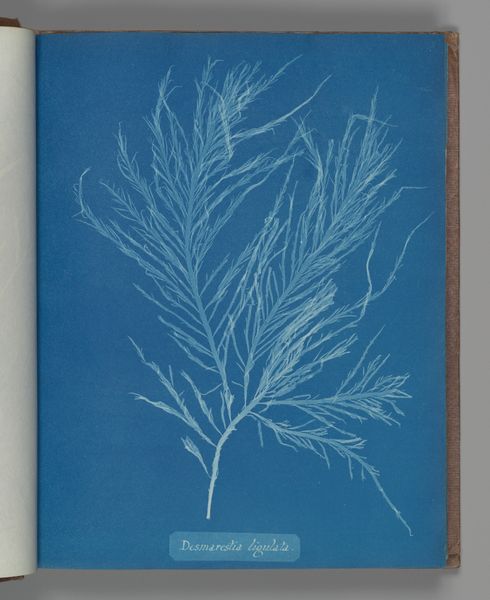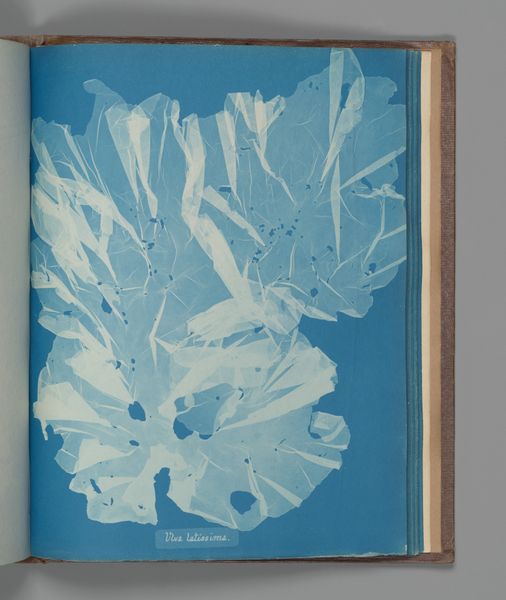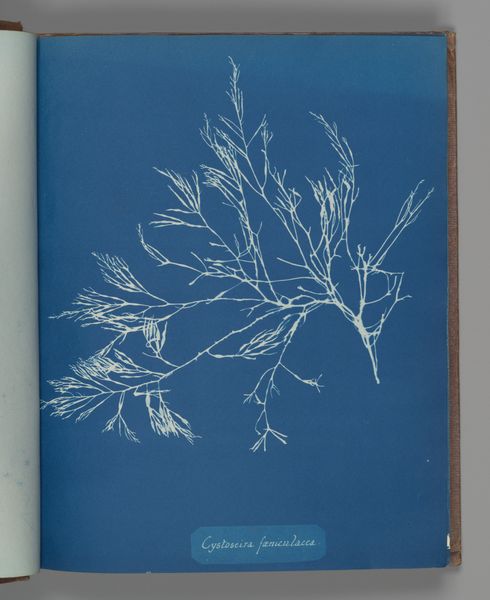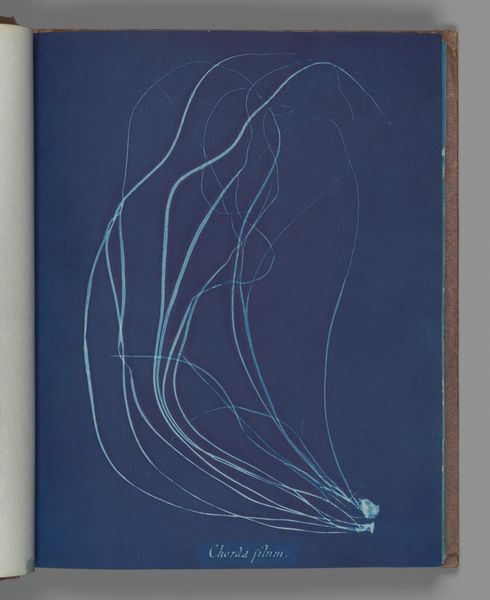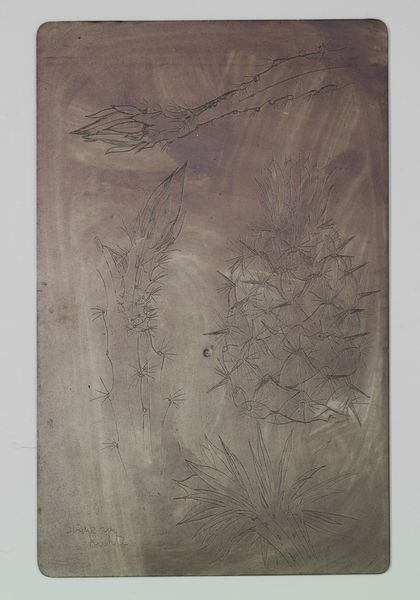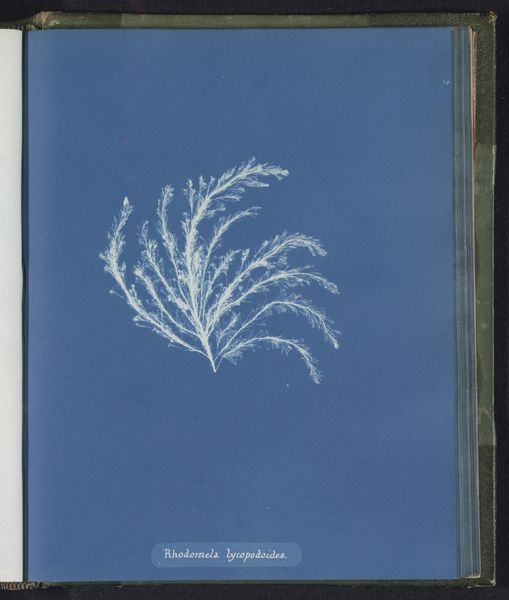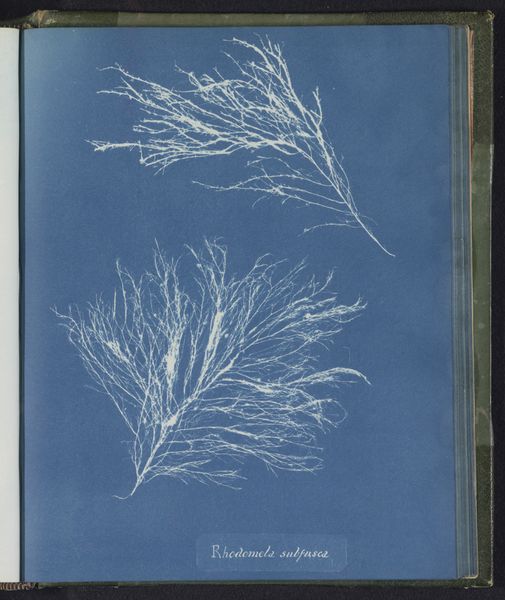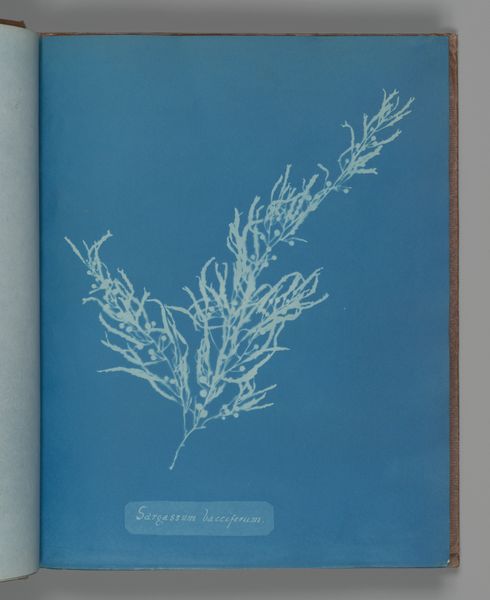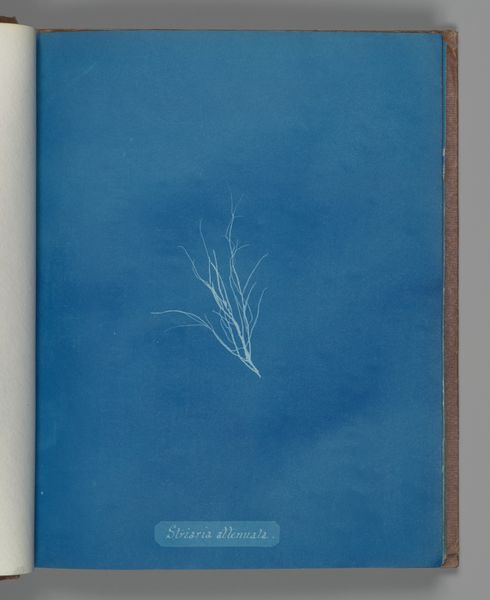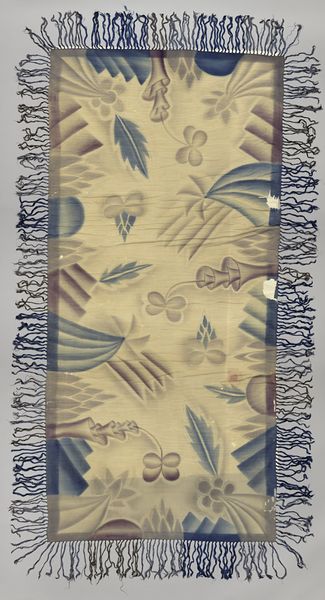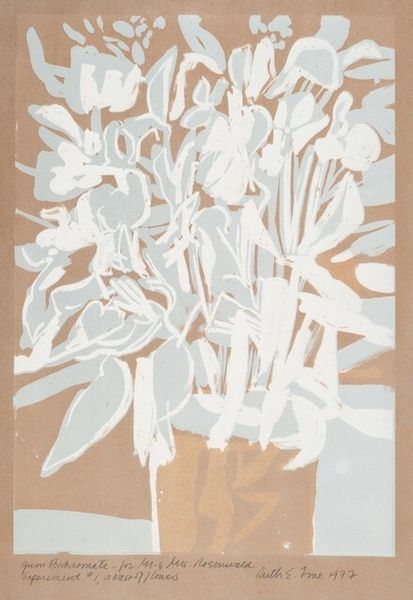
print, cyanotype, photography
#
organic
# print
#
cyanotype
#
photography
#
line
Dimensions: Image: 25.3 x 20 cm (9 15/16 x 7 7/8 in.)
Copyright: Public Domain
Editor: Here we have Anna Atkins’s "Desmarestia aculeata," created between 1851 and 1855. It's a cyanotype, a type of early photographic print. I’m immediately struck by how delicate the seaweed looks against that intense blue. What can you tell us about this striking image? Curator: Atkins' work sits at a fascinating intersection of science, art, and the then-burgeoning field of photography. We see this reflected in its institutional life; after all, here it is within the collection of the Met. Her botanical cyanotypes, made for scientific purposes, were bound into what’s considered the first book illustrated with photographic images. Think about the cultural context: how were women encouraged to participate in intellectual life at this time? How did new technologies shape possibilities for doing so? Editor: So, it's partly about access and how new mediums created opportunities. How would her gender affect the role she played? Curator: Precisely. Photography offered women a socially acceptable avenue for scientific engagement, especially in fields like botany. The politics of imagery also comes into play: this image emphasizes objective representation of natural forms, fitting into the scientific goals of cataloging the natural world. At the same time, the aesthetic choices, such as the intense color and minimalist composition, have garnered interest in this image in a fine arts context. How do you see the cyanotype process informing the overall aesthetic and historical significance? Editor: It’s clear now how those gorgeous blues tie directly to the function, and how context created significance. I originally saw its simple beauty, but I realize now the process itself tells a rich story. Curator: Indeed. Atkins' work showcases how cultural expectations and social structures intersect with technological innovation and artistic expression, and our expectations of those categories. We can see, then, why Atkins continues to resonate for artists and historians alike.
Comments
No comments
Be the first to comment and join the conversation on the ultimate creative platform.
